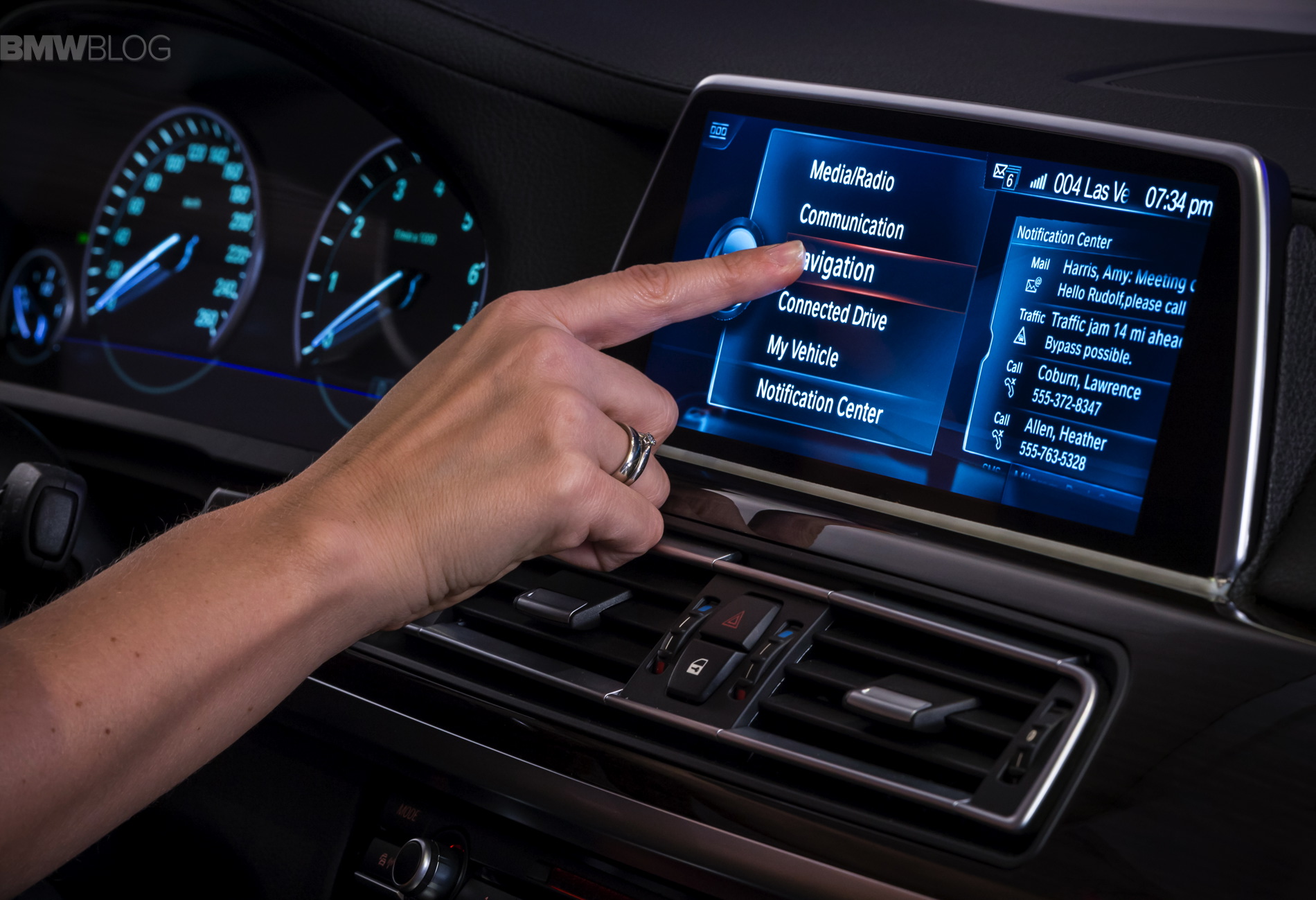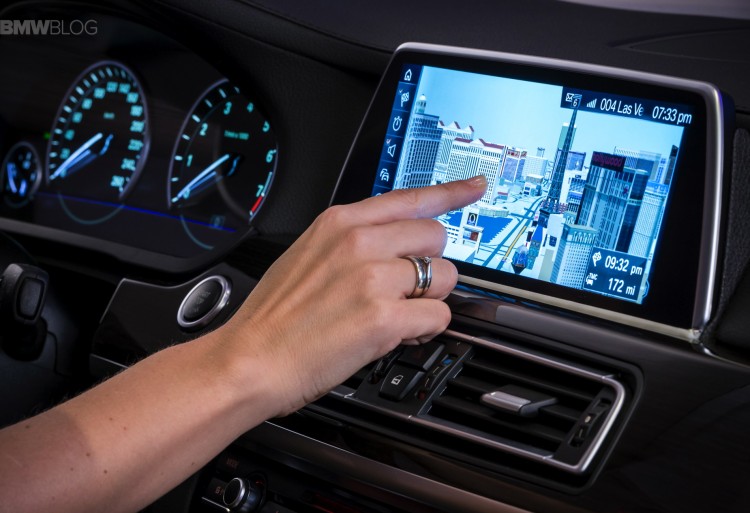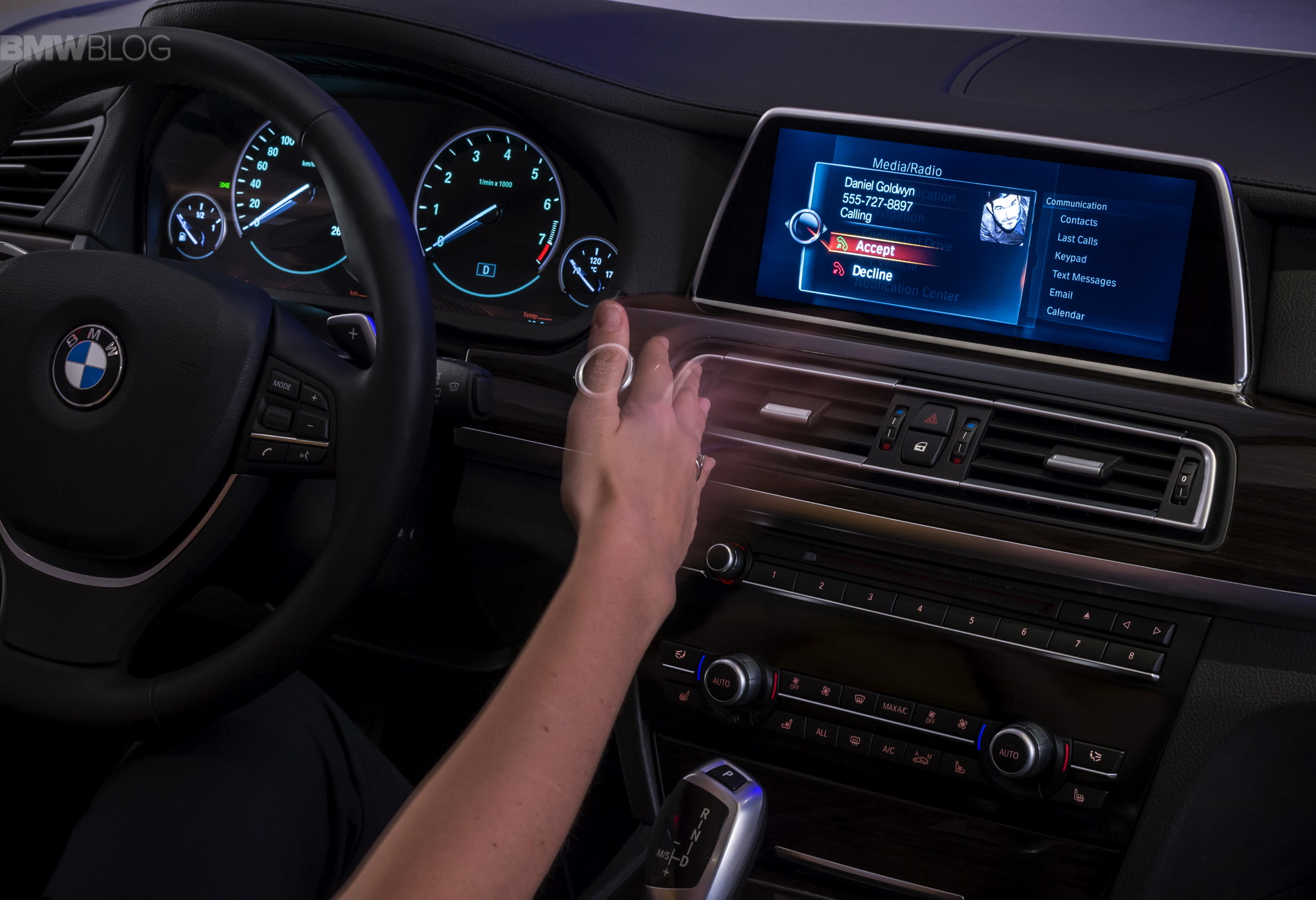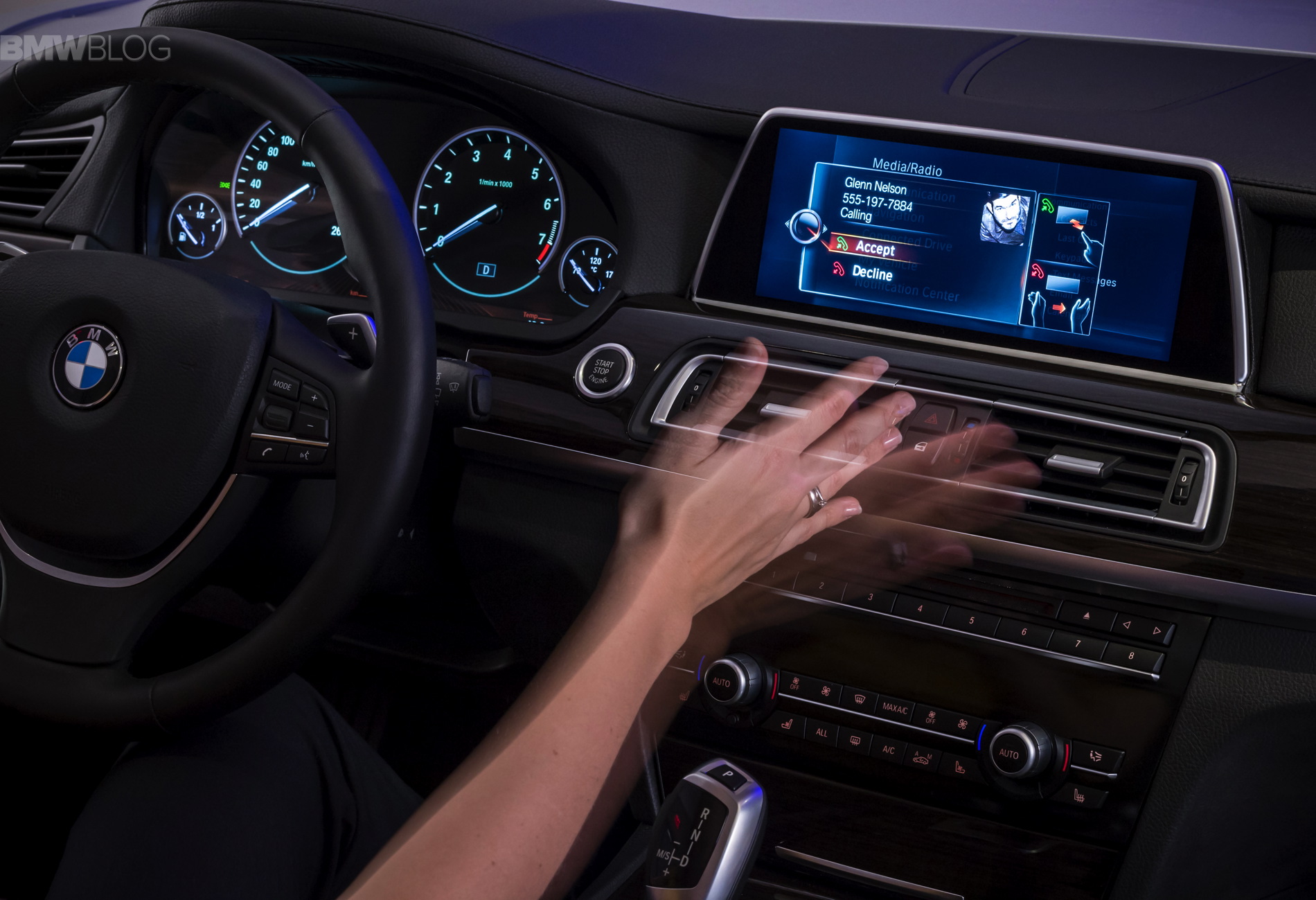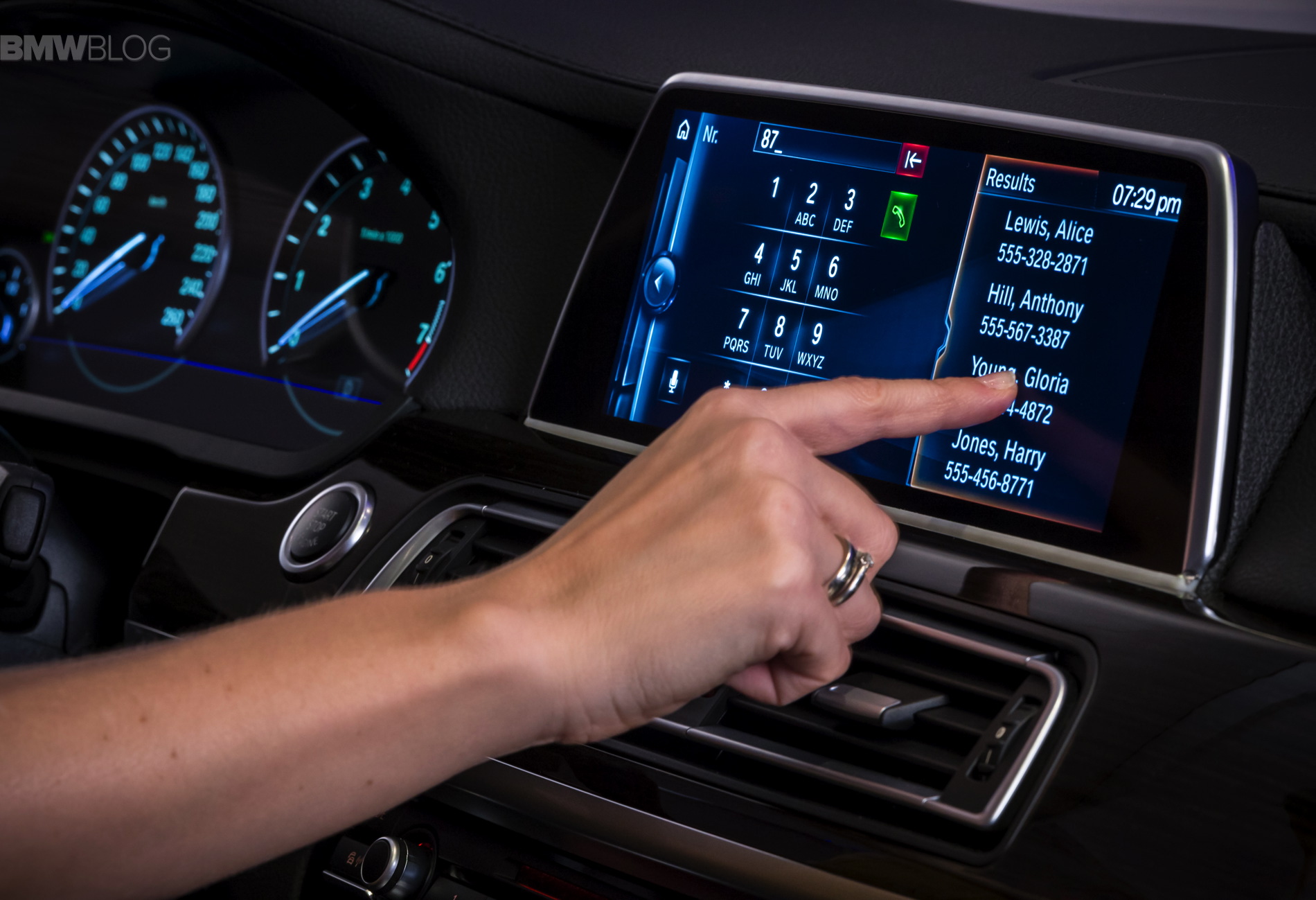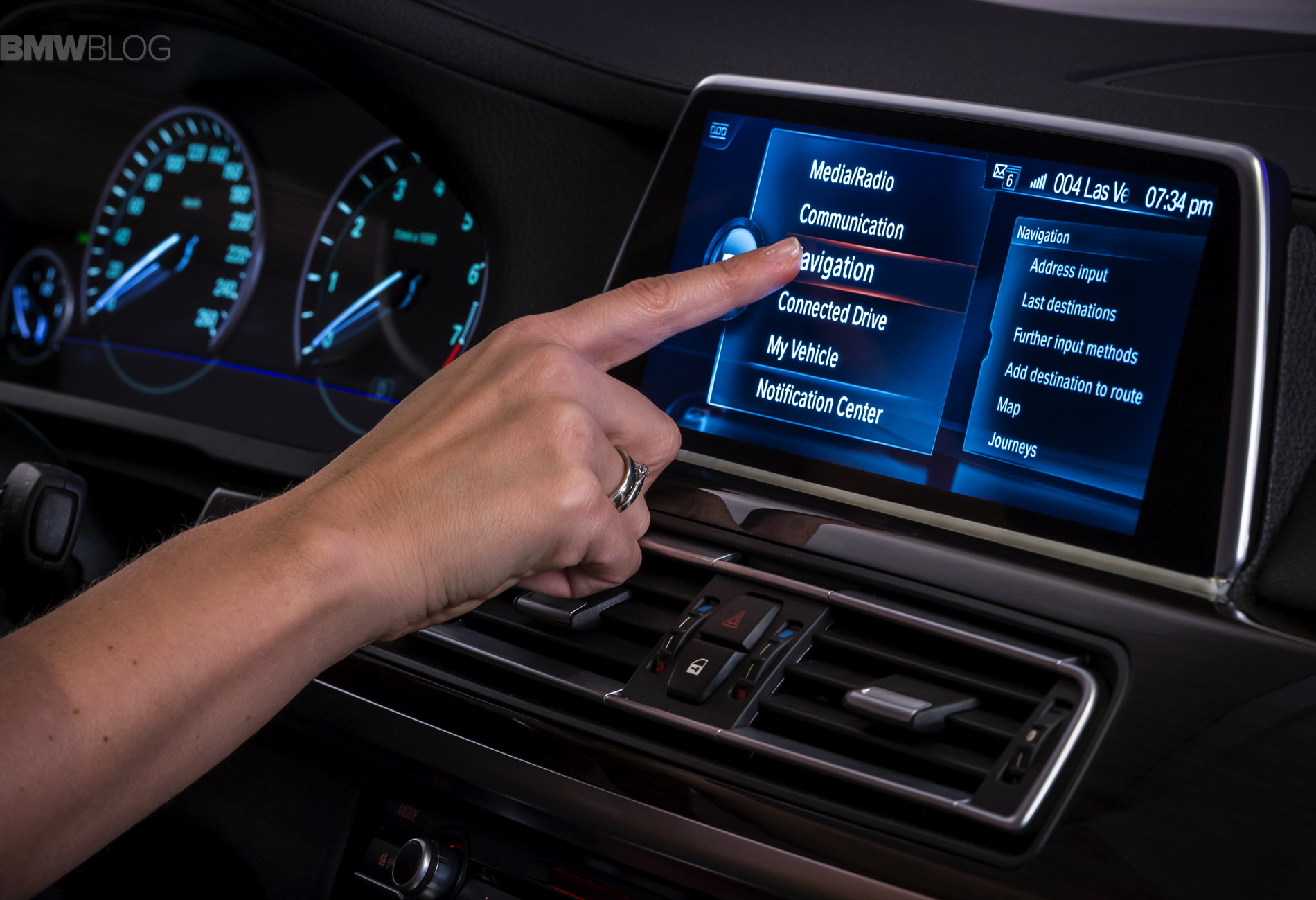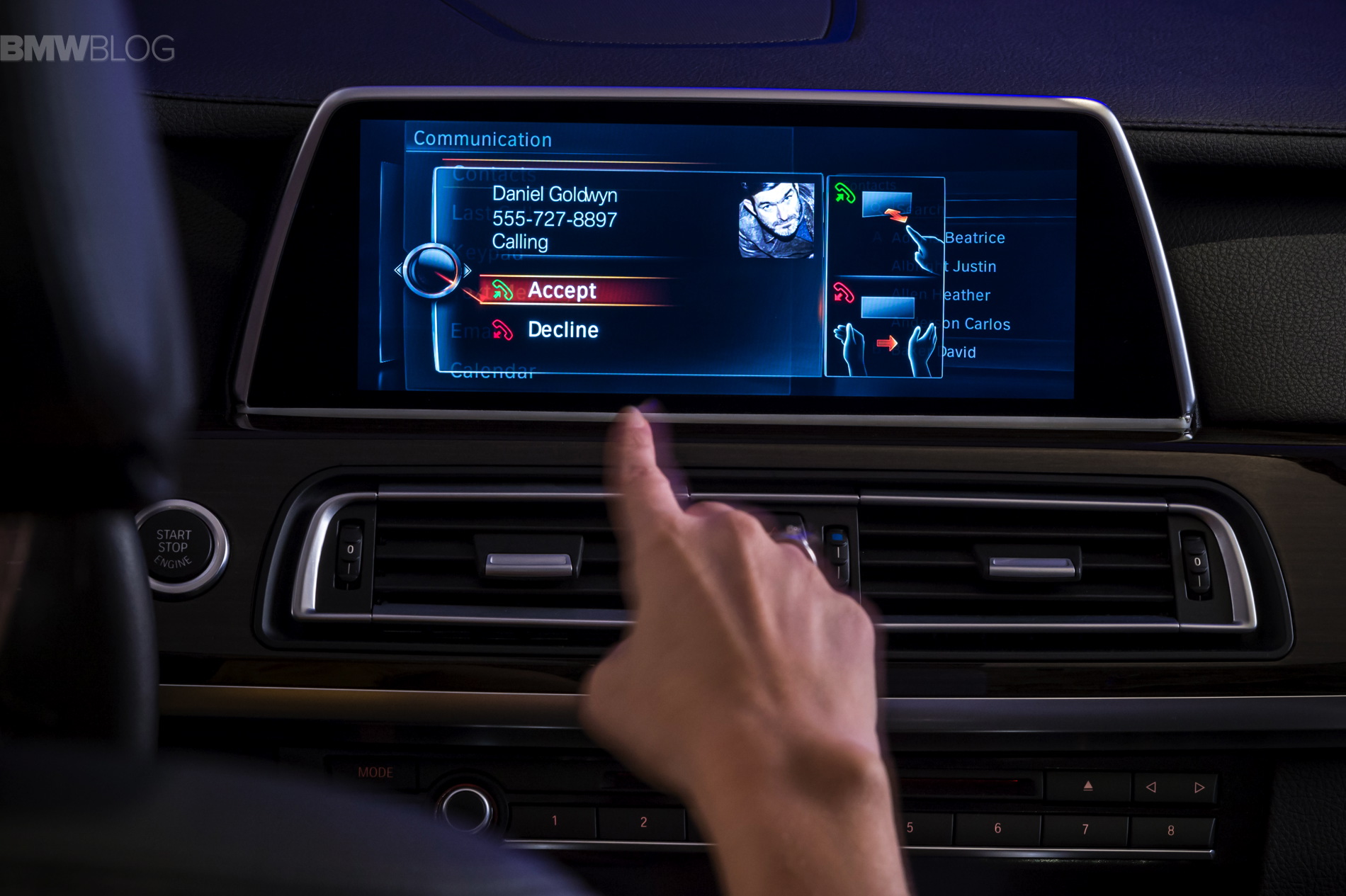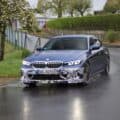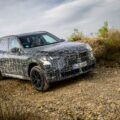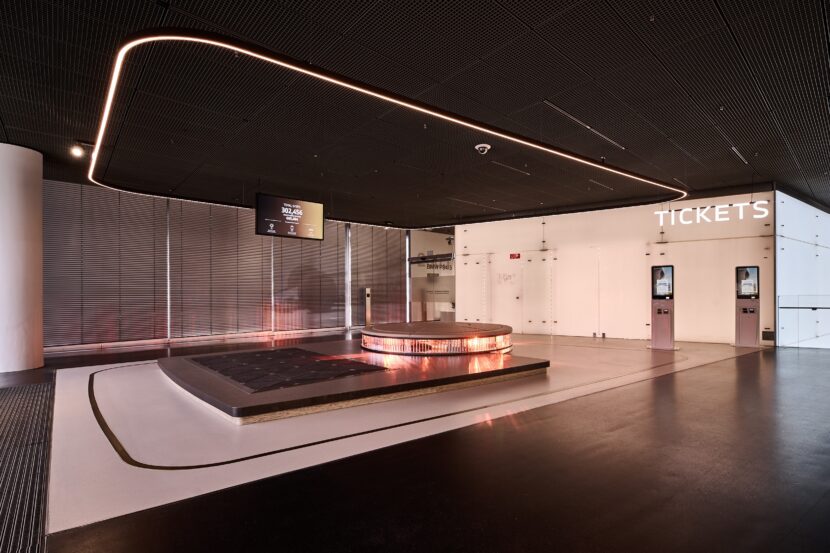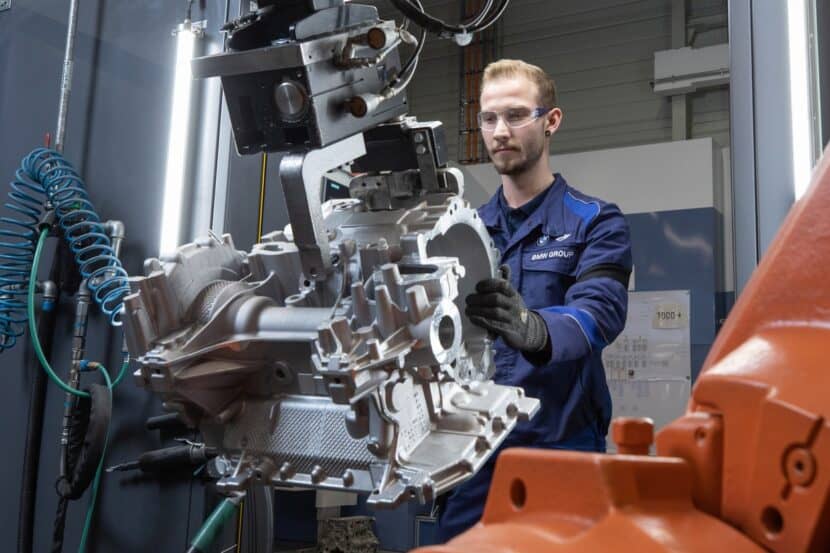At the 2015 CES, BMW is unveiling their latest and greatest iteration of the iDrive system. The new iDrive Controller will be first launched in the new 7 Series and will bring features like touchscreen control and non-contact gesture recognition.
The infotainment system can be operated not only by the iDrive Controller/iDrive Touch Controller but also by touchscreen. The touchscreen and iDrive can each be used to control all functions. BMW is quick to point out that this is different system than what other automakers are offering in a form of a hybrid infotainment system with functions operated independently through two interfaces.
The true innovation comes through from the non-contact gesture recognition. The driver or front passenger simply performs a directed gesture in the area between the gear lever, steering wheel and Control Display. A 3D sensor in the roof detects whether one or two fingers are being pointed, or whether the thumb and index finger are being moved towards each other. The system decodes different movements – such as tapping, finger rotations or a swiping movement to the right – and performs the desired input. A rotating movement can be used, say, to alter the volume of the radio, a finger raised to accept a phone call or a swiping movement to decline a call.
Regardless of whether the iDrive Controller or the touchscreen is used, BMW says that both systems conform to their strict standards on safe data inputting while on the move.
The new iDrive will most likely arrive in other production cars after the launch of the new 7 Series this fall.
PRESS RELEASE
Perfect complement: touchscreen and iDrive control system
The rapid proliferation of tablet computers and smartphones in recent years has seen a fundamental change in the way digital devices are used. In many areas, touchscreens have already replaced input devices such as the keyboard, mouse or touchpad, offering improved speed and more precise response. Users have now become used to performing intuitive finger movements across screens or using learned gestures to interact with programmes on their devices.
The BMW Group has noted this change in user habits and at CES in Las Vegas is unveiling an infotainment system that can be operated not only by the iDrive Controller/iDrive Touch Controller but also by touchscreen. The touchscreen and iDrive can each be used to control all functions. This is an important difference over existing hybrid systems that comprise a main control unit and a second interface that can only be used to operate certain functions.
To take one example, the research application on show at CES offers users the choice of either scrolling through playlists or navigation addresses using the iDriveController or entering numbers directly on the touchscreen. A virtual keyboard opens up on the touchscreen as soon as the user’s hand approaches. Even while entering letters, it is possible at any time to switch between the iDrive Controller, the iDrive Controller touchpad or the touchscreen. The advantages of intuitive iDrive operation can therefore be supplemented by an additional option, giving the user more choice. Regardless of whether the iDrive Controller or the touchscreen is used, both systems conform to BMW’s strict standards on safe data inputting while on the move. The positioning of the displays, in all vehicles of the BMW Group, and the suitably optimised text size reflect thoughtful ergonomic design and aid optimal data inputting – whether using the iDrive Controller or the touchscreen.
Direct data inputting with non-contact gesture recognition.
Advanced sensor technology has already made it possible to perfect the technique of gesture control. This means of control is being showcased at CES in a research application that can be used to control selected infotainment functions. That is to say, a variety of functions can be performed not only using iDrive and the touchscreen, but also through non-contact gesture control. The driver or front passenger simply performs a directed gesture in the area between the gear lever, steering wheel and Control Display.
A 3D sensor in the roof detects whether one or two fingers are being pointed, or whether the thumb and index finger are being moved towards each other. The system decodes different movements – such as tapping, finger rotations or a swiping movement to the right – and performs the desired input. A rotating movement can be used, say, to alter the volume of the radio, a finger raised to accept a phone call or a swiping movement to decline a call. Like touchscreen control and the iDrive Controller, non-contact gesture control can offer even more efficient and convenient operation of new-generation entertainment systems.


